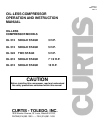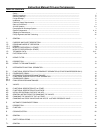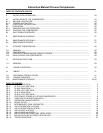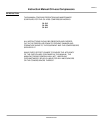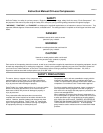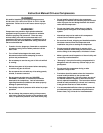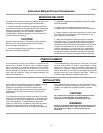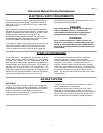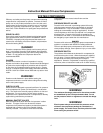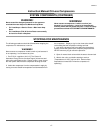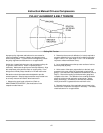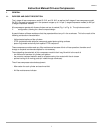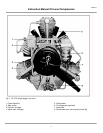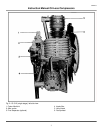
CAP-215
ii
Instruction Manual Oil-Less Compressors
DANGER!
Air used for breathing or food processing must meet
O.S.H.A. 29 C.F.R. 1910.134 or F.D.A. 21 C.F.R. 178.350
regulations. Failure to do so will cause severe injury or
death.
WARNING!
Compressors are precision high speed mechanical
equipment requiring caution in operation to minimize
hazard to property and personnel. There are many
obvious safety rules that must be observed in the
operation of this type of equipment. Listed below (in no
particular order) are some additional safety precautions
that must be observed.
• Transfer of toxic, dangerous, flammable or explosive
substances using Curtis-Toledo products Is at the
User's risk.
• Turn off and lockout/tagout the main power
disconnect switch before attempting to work or
perform any maintenance.
• Do not attempt to service any part of this unit while It
Is running.
• Relieve the system of all pressure before attempting
to service any part of the unit.
• Do not operate the unit with any of its safety guards,
shields, or screens removed.
• Do not remove or paint over any DANGER!,
WARNING!, CAUTION!, or Instructional materials
attached to the compressor. Lack of Information
regarding hazardous conditions can cause property
damage or personal Injury.
• Periodically check all pressure relief valves for proper
operation.
• Do not change the pressure setting of the pressure
relief valve, restrict the function of the pressure relief
valve, or replace the pressure relief valve with a plug.
• Do not install a shutoff valve in the compressor
discharge line without first Installing a pressure relief
valve of proper size and design between the shutoff
valve and the compressor.
• Do not use plastic pipe, rubber hose, or lead-tin
soldered joints In any part of the compressed air
system.
• Alterations must not be made to this compressor
without Curtis-Toledo's approval.
• Be sure that all tools, shipping and Installation debris
have been removed from the compressor and
Installation site prior to starting the compressor.
• Do not operate the compressor in excess of the
A.S.M.E. pressure vessel rating for the receiver or the
service rating of the compressor, whichever is lower.
• Make a general overall inspection of the unit daily and
correct any unsafe situations.
• "Horseplay" of any kind involving compressed air is
dangerous and can cause very serious injury to the
participants.
• Do not touch the compressor during or after
operation-it may be HOT
• Provisions should be made to have the instruction
manual readily available to the operator and
maintenance personnel. If for any reason any part of
the manual becomes illegible or the manual is lost,
have it replaced immediately. The instruction manual
should be read periodically to refresh one's memory.
It may prevent a serious or fatal accident.
• It is recommended sufficient clean-up equipment be
provided and proper maintenance be performed to
ensure clean, dry, oil-free air for instrumentation.



